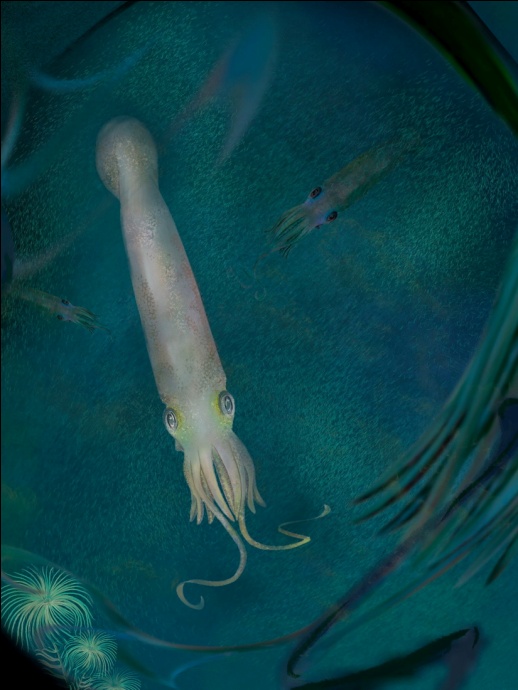Syllipsimopodi Bideni

Copyright infringement is not intended
Context: A fossil unearthed in central Montana of a species named Syllipsimopodi bideni represents the oldest-known relative of today's octopuses and boasts 10 arms.
Syllipsimopodi bideni:
- About 4-3/4 inches (12 cm) long, it had a torpedo-shaped body and squid-like appearance.
- It also is the oldest-known creature with suckers, which enable the arms to better grasp prey and other objects.
- The fossil help in understanding of how octopuses evolved.
- The preserved fossil reveals two parallel rows of suckers up and down each arm, dates to about 328 million years ago.
- "Syllipsimopodi" means "prehensile foot" - its arms are an evolutionary modification of the foot of mollusks - and "bideni" recognizes U.S. President Joe Biden, who had just been inaugurated when the study was submitted for publication.
- Syllipsimopodi represents the only member of the octopus lineage with 10 arms, meaning two were lost in later evolution.
- Capture of prey is facilitated by the two longer tentacles with the eight shorter arms helping to manipulate the prey and transport it to the beak.
- Syllipsimopodi prowled the warm waters of a tropical bay - Montana at the time was situated close to the equator. It may have been a mid-level predator, eating smaller invertebrates.
- Syllipsimopodi lived during the Carboniferous Period, a time of important evolutionary changes in other marine life that included the appearance of more modern-looking fishes.
Octopuses:
- Octopuses, ranging from the one-inch (2.5 cm) star-sucker pygmy octopus to the 30-foot (9-meter) giant Pacific octopus, are known for their otherworldly appearance, with bulbous heads, large eyes and beak-like jaws.
- They are adept at camouflage - changing colors and even textures to mimic their surroundings - and can maneuver their bodies into tiny cracks and crevices.
- They also are capable of tool use and problem-solving.
- Octopuses are the most intelligent invertebrates, and among the most intelligent animals overall.
- Octopuses are cephalopods, a marine invertebrate group dating back to roughly 530 million years ago and distinguished by having arms or tentacles. Cephalopods today also include squids, cuttlefishes and nautiluses.



1.png)
